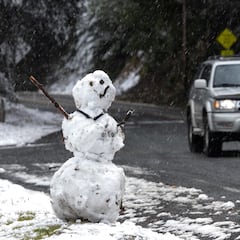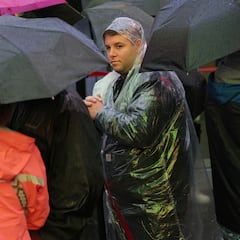What is the lake-effect snow and how is it different from regular snowstorms?
Winter weather is here again and with it the chance for snow, if the conditions are right. So, what does it take for the regular type and lake-effect snow?

Winter weather is here again and with it snow showers. Those traveling home across the Plains from Thanksgiving get-togethers got a big helping of the white stuff. A front dropped a once-in-a-century November snowfall on Wichita, Kansas.
That system has moved east but behind it the instability will provide the right conditions for a round of lake-effect snow. As with every year, those around the Great Lakes are bracing for a major snowfall, with those on the east ends of Lakes Erie and Ontario forecast to get two feet or more.
So, what does it take for the regular type and lake-effect snow?
Travelling around the Great Lakes will be a bit treacherous this week as the lake-effect snow machine cranks up. Snowfall of 2 ft+ is possible through the middle of the week downwind of Lakes Erie and Ontario. pic.twitter.com/CbJOLgeI6t
— National Weather Service (@NWS) November 27, 2023
You might also be interested in: What was the worst winter storm in US history?
What is the lake-effect snow and how is it different from regular snowstorms?
All snow storms form much in the same way as other precipitation events. Warm moist air rises and as it gets colder it condenses. Snow is formed when the water droplets freeze into ice crystals and then those accumulate more water vapor which freezes onto it to form snowflakes or snow pellets. Once they reach the point where they are heavy enough and the upward current in the cloud cannot keep them aloft any longer, they fall to earth.
However, in order for it to reach the ground as snow, the airall the way down must be at or below freezing, just like in the atmosphere for the ice crystals to form in the first place. If the air at ground level is too warm, the ice crystals will melt and turn into rain, which may or may not start off as ice crystals itself.
If those ice crystals pass through a warm layer of air and partially melt before hitting another layer of freezing air above the surface and refreeze, it will become sleet. Should the same happen, but the ice crystal completely melts before passing through freezing air above the surface, the supercooled water will freeze on impact with a surface, better known as freezing rain.
As the sun rises this morning, @NOAA's #GOESEast 🛰️ can see cloud streets streaming from the Great Lakes, which are bringing heavy lake effect snow to some downwind locations. #WinterStorm Warnings and #LakeEffect Snow Warnings are in effect for parts MI, OH, PA and NY today.… pic.twitter.com/cMIVKPnnEq
— NOAA Satellites (@NOAASatellites) November 27, 2023
Lake-effect snow
The process for lake-effect snow is slightly different, requiring special circumstances, but the concept is the same for snow creation. In order to get lake-effect snow, you need an open body of water that is wide enough, sufficient temperature difference between the land and the water as well as wind that isn’t blowing too strongly.
Related stories
As the cold freezing air moves across the unfrozen and relatively warm water, moisture is sucked up into the atmosphere. Clouds are formed and grow into a narrow band, or bands which drop snow on the downwind side of the body of water. These bands can drop between 2-3 inches of snow per hour but can dump as much as 6 inches in an hour.
While this type of snowfall can occur in different parts of the world that present the above mentioned conditions, lake-effect snow is very common around the Great Lakes, especially on the southern and eastern shores. The area provides ideal conditions in the fall and early winter before the lakes freeze over.


